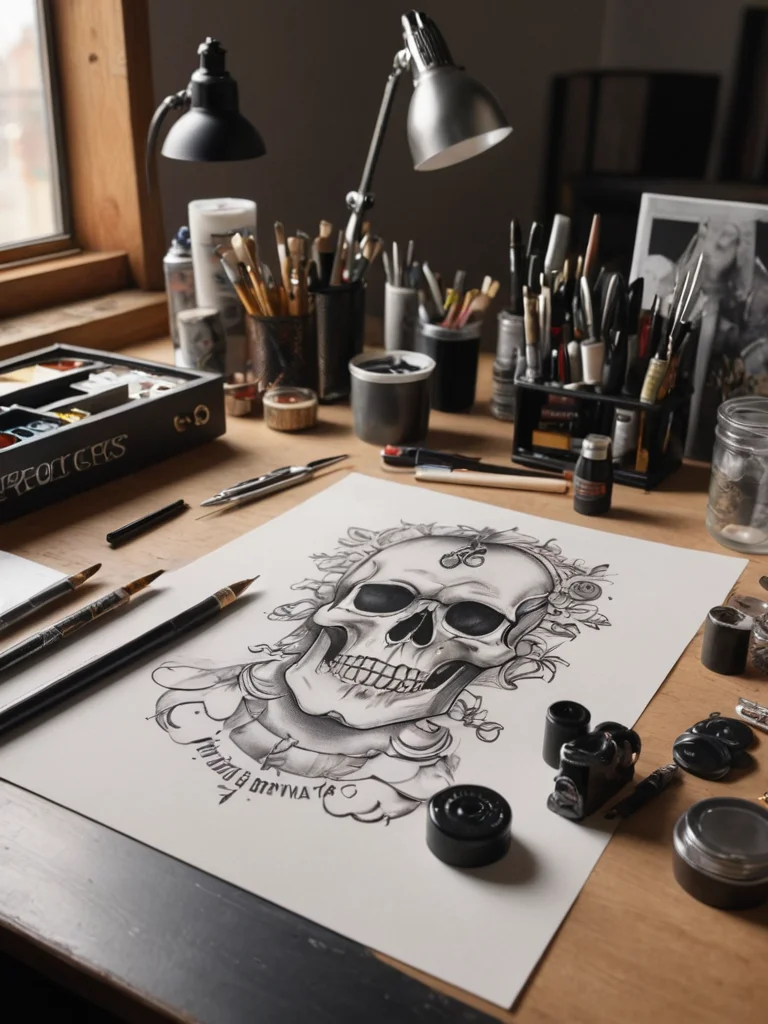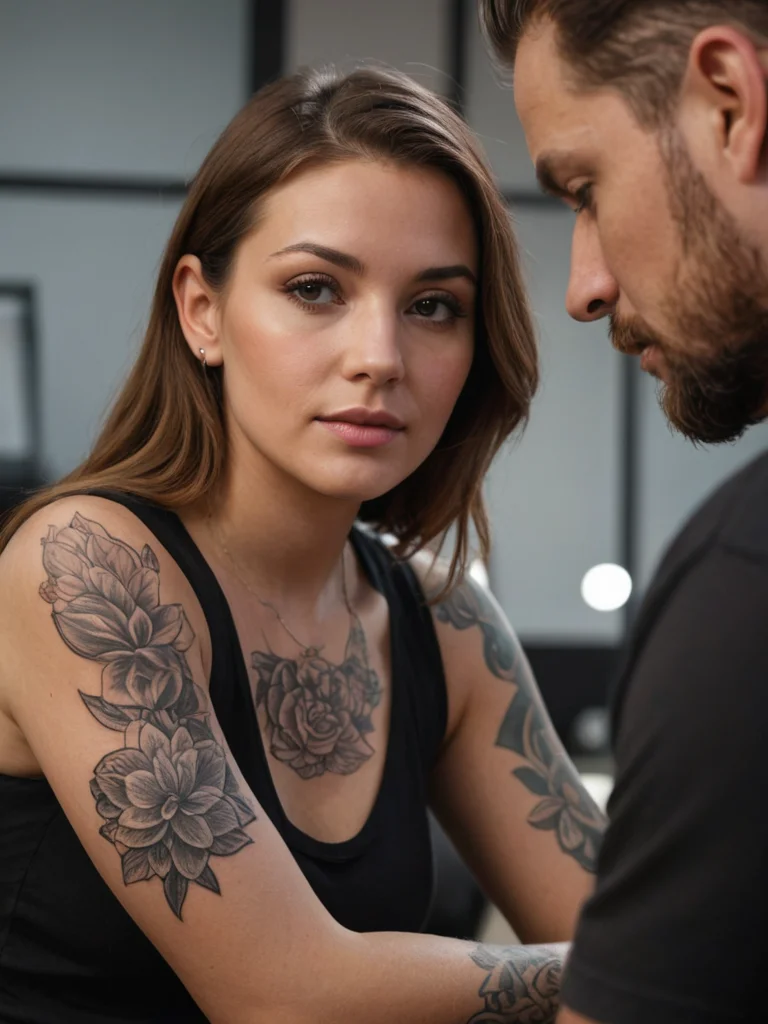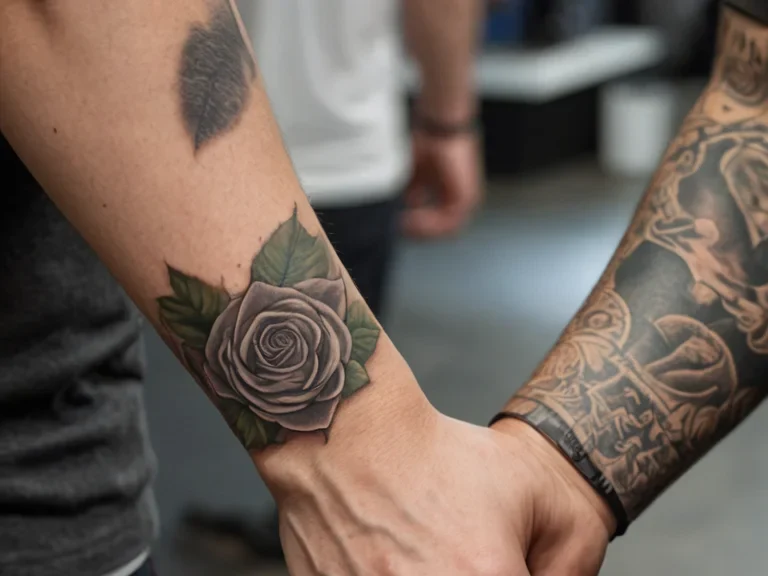Tattoo conventions are vibrant hubs of creativity, networking, and opportunity for artists. They offer a unique chance to showcase your skills, connect with fellow professionals, and attract new clients. However, simply showing up isn’t enough. To truly maximize your convention experience, thorough preparation is key. This guide will walk you through the essential steps an artist needs to take, from understanding the benefits of attending to refining your strategy for post-convention success. Think of it as your ultimate checklist for thriving in the electrifying atmosphere of a tattoo convention, ensuring you leave with more than just sore feet – you’ll leave with new clients, valuable connections, and a revitalized passion for your craft.
Why attend a tattoo convention? your essential artist checklist
Attending a tattoo convention as an artist is a strategic decision that can significantly impact your career. Beyond the obvious benefit of potentially tattooing multiple clients over a weekend, conventions are unparalleled marketplaces for your artistry. They provide a concentrated audience of highly engaged individuals who are actively seeking tattoo inspiration and are ready to commit to new pieces. For many artists, this is where they can build a substantial portion of their annual clientele. Furthermore, conventions serve as crucial networking events. You’ll be surrounded by peers from different regions, with diverse styles and approaches. This exposure can be incredibly enlightening, offering insights into new techniques, trends, and business practices. It’s an opportunity to learn from the best, exchange ideas, and even forge collaborative relationships. Many artists use conventions as a barometer for their own standing in the industry, observing trends and gauging their personal progress against a wider field. It’s also a chance to gain exposure beyond your local client base, potentially attracting international interest if the convention draws a global audience. Consider it an intensive immersion into the heart of tattoo culture, a place where you can test your skills, expand your horizons, and elevate your professional profile. Preparing a comprehensive checklist ensures you don’t miss any of these vital opportunities.
Mastering your booth: setup, supplies, and presentation

Your booth is your professional storefront at the convention; it’s the first impression you’ll make on potential clients and colleagues. Therefore, meticulous planning regarding setup, supplies, and presentation is paramount. Start with your booth design. It should be clean, organized, and reflective of your artistic style. Think about branding – your logo, color scheme, and overall aesthetic should be consistent. A well-lit, inviting space encourages people to stop and engage. Consider portable lighting solutions to ensure your work is always visible, regardless of the venue’s lighting. Your portfolio is your primary visual tool. Ensure it’s readily accessible and high-quality. This can be a physical book showcasing your best healed work, a high-resolution digital display on a tablet or screen, or both. Include a variety of styles if you are versatile, or focus on your specialty if that’s your brand. For digital portfolios, ensure devices are fully charged and have backup power sources.
Crucially, you must stock an ample supply of all your tattooing essentials. This includes, but is not limited to, a sufficient quantity of high-quality tattoo machines (both cartridge and coil, depending on your style), a variety of needles and configurations, a comprehensive range of ink colors from reputable brands, disposable tubes, grips, cartridges, razors, stencil paper, transfer cream, and cleaning solutions. Don’t forget your personal protective equipment (PPE): gloves (plenty of them!), masks, barrier film for your equipment, and antiseptic wipes. Having more than you think you’ll need is always a wise strategy, as running out of a critical supply can halt your work and lose you business. Think about comfort too – a comfortable chair for yourself and a sturdy, adjustable station for your client are essential for long tattooing sessions. Include a small, mobile trash receptacle for easy disposal of used materials.
Presentation extends to your personal appearance. Dress professionally and comfortably. Many artists opt for branded apparel, such as t-shirts or aprons, which further enhances brand recognition. Maintain good hygiene throughout the event; frequent hand washing and sanitization are non-negotiable. Your booth staff, if you have any, should also be briefed on presentation and professionalism. Ensure your business cards are easily accessible and clearly display your contact information, website, and social media handles. Consider having a sign-up sheet for consultations or future appointments, along with pens. A smooth, organized setup not only looks professional but also streamlines your workflow, allowing you to focus on what you do best: creating incredible art.
Client management: from walk-ins to consultations

Tattoo conventions are magnets for walk-in clients, but managing them effectively requires a strategic approach. First, establish a clear system for handling inquiries. Have a designated person, or be prepared yourself, to greet people who approach your booth. A friendly, approachable demeanor is crucial. Be ready to quickly assess their interest and needs. For spontaneous walk-ins, you need to be able to assess if you have the time, the right supplies, and if the design is suitable for the convention environment. Not every piece can or should be done on the spot; sometimes, a consultation is the better route.
Consultations are where you build rapport and set expectations. When a potential client approaches with a detailed idea, offer them a seat (if available) and engage in a thorough discussion. Ask clarifying questions about their vision, placement, size, style, and any reference images they might have. Use your portfolio to demonstrate your capabilities and suggest design elements. Be honest about your availability and the time commitment required. If you can take them on during the convention, discuss the process, including deposit requirements and aftercare. If you can’t accommodate them during the event, use the consultation to schedule a future appointment at your studio or collect their contact information for a follow-up.
For those looking to book future work, a clear booking process is essential. Have a system for collecting deposits and booking appointments, whether it’s a digital calendar or a physical appointment book. Business cards with your studio’s contact details and social media handles are vital for clients to follow up. Managing expectations is key. Conventions are often fast-paced, and clients might be eager. Clearly communicate your process, potential wait times, and what they can expect during the tattooing process. Remember that every interaction is a reflection of your professionalism and artistry. Even if you don’t tattoo someone at the convention, a positive consultation can lead to a loyal client down the line. Therefore, treat every inquiry with respect and attentiveness, aiming to provide a seamless and informative experience.
Networking & business growth: making the most of connections

Beyond client acquisition, tattoo conventions are goldmines for networking and business growth. Actively seek out opportunities to connect with fellow artists, shop owners, suppliers, and even potential mentors. Don’t just stay within your comfort zone; explore the convention floor, visit other booths, and strike up conversations. Complimenting another artist’s work is a great icebreaker. Ask questions about their process, their experiences, or even their favorite tools. Remember, most artists are passionate about their craft and are often happy to share insights. Exchanging business cards is a simple yet effective way to remember who you’ve met and how to follow up.
Look for opportunities to attend seminars, workshops, or panels that might be offered during the convention. These sessions are often led by industry leaders and can provide invaluable knowledge on everything from advanced techniques to business management and marketing. Absorbing this information can give you a competitive edge. Observing other artists at work can also be incredibly educational. Pay attention to their setup, their client interaction, their speed, and their efficiency. You can learn a lot just by watching experienced professionals navigate the convention environment. Furthermore, conventions are excellent platforms to promote your own brand. If you have merchandise, such as prints or apparel, consider displaying and selling them. This not only provides an additional revenue stream but also increases brand visibility.
Consider the business aspect beyond just tattooing. Are there suppliers offering new equipment or inks that could improve your work or efficiency? Are there photographers or videographers specializing in tattoo content who could help you create professional promotional material? These connections can be just as valuable as client bookings. Building a strong network within the tattoo community is a long-term investment. The relationships you forge at a convention can lead to guest spots in other studios, collaborative projects, referrals, and lifelong friendships. Approach networking with genuine curiosity and a willingness to both give and receive. Be present, be engaged, and be open to the wealth of knowledge and opportunity that surrounds you.
Post-convention success: follow-up and future planning
The work doesn’t end when the convention doors close. The follow-up is critical to capitalizing on the momentum you’ve generated. Immediately after the convention, take time to organize your contacts and notes. Sort through the business cards you collected, identifying key individuals and potential clients. Reach out to potential clients who booked consultations or expressed serious interest. Send personalized emails or messages referencing your conversation and outlining the next steps for their tattoo appointment. If you promised to send them design ideas or more portfolio pieces, do so promptly. For clients you tattooed at the convention, a simple follow-up message to check on their healing process can foster goodwill and encourage them to share photos of their healed work.
Analyze your convention experience. What worked well? What could have been improved? Did your booth setup function efficiently? Were your supply levels adequate? Did you effectively manage your time and client flow? Were your marketing materials impactful? Gathering this data is invaluable for planning your next convention appearance. Assess the return on investment – not just financially, but also in terms of exposure and new connections made. Review your finances from the event, including booth fees, travel expenses, supply costs, and revenue generated. This will help you determine the profitability of your participation and inform future budgeting.
Update your portfolio and social media with any new work created at the convention. Tag clients (with their permission) and the convention organizers. Share highlights from your experience, perhaps a short video or a collection of photos. This keeps your online presence active and demonstrates your continued engagement with the tattoo community. Finally, use the insights gained to refine your long-term business strategy. Did the convention reveal a particular style or niche that is in high demand? Should you adjust your pricing or service offerings? By systematically following up and reflecting on your experience, you ensure that the convention remains a valuable stepping stone for continued growth and success in your tattooing career.